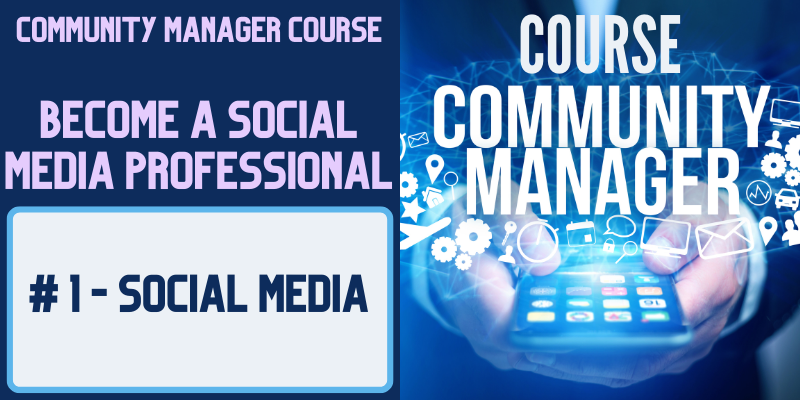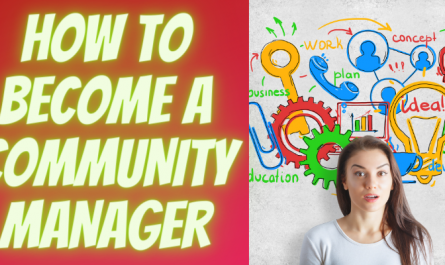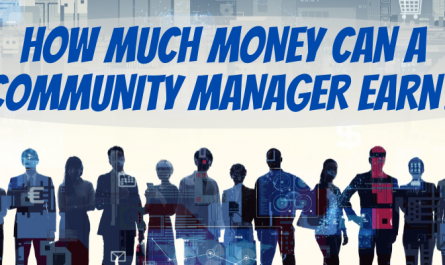Table of Contents
In social media career, you can become a social media professional and work with some of the most popular social media platforms. You will need to have excellent communication and writing skills to be successful in this career. In addition, you should be able to use social media platforms to their full potential and be able to engage with users.

UNIT 1.- SOCIAL MEDIA
PRESENTATION AND GOALS
The Internet is a source of knowledge and a meeting place for people and companies. In this scenario, the new role of the user is particularly relevant. Companies have always enjoyed their role as broadcasters in communication, but now consumers are also willing to take on the role of transmitter of information thanks to the Internet and social networks.
Web 2.0 and Web 3.0, together with the boost provided by social networks, give users all the tools they need to promote dialogue between consumers and brands. Faced with users who are increasingly involved, companies must be very much present on this type of social companies must be very present in this type of social media, as they offer multiple possibilities.
GOALS.
In this unit you will learn:
* To know briefly “How the Internet has evolved”.
* To differentiate in a general way the different types of social networks.
* Distinguish between consumer and prosumer.
* Be aware of the great opportunities offered by social networks for users and brands.
1.- FROM THE TRADITIONAL WEB TO WEB 3.0
The beginning of the Internet and the webs is related to military and intelligence objectives. In the 1960s, the United States began to work on a networked computer system that would survive in the event of an attack on one of its cores. Thus, they began to develop network connections that transmitted packets of information quickly and more or less autonomously.
At the end of the decade, the U.S. Department of Defense created ARPANET, a system for interconnecting several universities that today is considered the beginning of the Internet, although it was not presented to the public until a few years later.
In those early years of ARPANET development, Ray Tomlinson created e-mail. With it, a new way of communicating was born with his particular ‘@’, used to separate the user’s name from the rest of the e-mail address.
Here we show you how the web has evolved from its origins to the present day:
WEB 1.0
This denomination included the first websites that appeared in the 1960s. Almost all their content was textual, although some included images. Their design was based on frames and they were not very intuitive for the user.
In addition, they required a high level of computer literacy to create. Communication was unidirectional: only the creator could communicate and make changes. Users could not interact with the content of the pages.
WEB 2.0
The term Web 2.0 is closely associated with Tim O’Reilly, due to O’Reilly Media’s Web 2.0 conference in 2004. It connects to a new paradigm in Internet communication: bidirectionality. Users can interact on the web and leave their opinion. They cease to be mere readers and become authors who have at their disposal a wide range of publishing tools or platforms, such as blogs, wikis, podcasts, photo and video portals, social networks, etc., where they can express themselves, give their opinions, seek and obtain information, build knowledge, share content, interrelate, etc.
WEB 3.0
This term is used to refer to a new generation of web that is nourished by the evolution of web 2.0. It is based on a geospatial web concept, where all information is stored in a kind of global database. It is also known as semantic web because all the information is treated so that browsers can understand in a simple and intuitive way the natural language we use. This expression Web3.0 first appeared in 2006 in an article by Jeffrey Zeldman, a critic of Web 2.0 and associated with technologies such as AJAX.
Currently, there is a variety of opinions regarding this denomination, since many consider it an evolution of 2.0 and not a new stage.
2.- CHARACTERISTICS OF INTERNET COMMUNICATION
It could be said that many of the principles of Web 2.0 coincide with the characteristics that are considered intrinsic to the Internet as we know it today. You will see them below:
* Great power of diffusion: the Internet by definition has no temporal or spatial barriers, but this technical capacity for diffusion did not become real on a practical level until Web 2.0 arrived. The change of the protagonists and creators of the information brings a great novelty: they themselves contribute to the dissemination of the information among their contacts and networks. Therefore, as there are multiple sources, it is much easier for the impact of the same message to multiply exponentially.
* Democratization of access: it is only relatively recently that the connection has reached practically everywhere, not only because network coverage has improved, but also because the media from which connections are made have changed. The Internet is now mobile, thanks to the use of devices that go far beyond the computer itself (laptops, tablets and smartphones), allowing you to connect at any time and from anywhere. This has meant that the number of users has increased along with the activity on the network. We are no longer just consumers of information, but now we are content creators.
* Exceptional communication conditions: the Internet offers very good communication characteristics, as it combines text, audio and video in an integrated and high quality way, so that the consumption of rich content,
This is particularly noticeable if you look at the This is especially noticeable if you compare this medium with others such as television or the press, which by their very nature are limited to a specific type of language. The combination of
The combination of formats makes the contents more spectacular and much more powerful and attractive.
* Interactivity and bidirectionality: with the advent of Web 2.0, the roles of sender and receiver alternate and true interactivity appears, allowing users to participate in the leading role within the network, and not simply be mere spectators or passive receivers of information. Thus, information exchanges are bidirectional, something that until now was not possible in other media.
* Great capacity to modify content: content managers and editors are now used, in addition to programming by means of codes, which are very flexible, allowing content to be modified very quickly and with a relatively modest outlay. The website can be constantly updated and errors can be corrected or content can be adapted as necessary. This great capacity for reaction and modification has given information on the Internet an immediacy that is only comparable to that of radio. In fact, it has become the reference when it comes to getting information or searching for information.
* Low cost: the Internet is a very cheap medium, not only because hosting pages on the network does not require a very high investment, but also because both advertising and design are much more flexible, adaptable and at a much lower cost than in other media, especially those of the Internet. than in other media, especially conventional media.

3.- NEW RELATIONSHIPS BETWEEN COMPANIES AND THEIR AUDIENCES: SOCIAL NETWORKS
As we have seen in the previous section, the Internet opens up a world of possibilities for both brands and users. In this context in which websites are interactive and dynamic, social networks have emerged. These are platforms where
users can connect with each other and share all kinds of content: thoughts, feelings, photos, videos, interests, etc.
This way of communicating on the Internet means that companies and consumers are forced to draw a new map of relationships between them. Brands have always played the role of transmitters of information related to their products, new products, advertising, etc. What is new is that users can also respond to this communication on an equal footing.
Users can relate to brands in the following ways:
Consumer: is simply engaged in reading or viewing content created by other users or brands, but does not have any type of productive activity or proactive attitude. This is the profile of a user who, although he knows how to use the network at a basic level, is not imbued with the Web 2.0 philosophy. It is related to the behavior of a user in web 1.0.
Prosumer: is someone who actively and enthusiastically participates in the creation of content and makes different contributions on the Internet, through pages, blogs or social networks. A prosumer, for example, can write a complaint on a company’s Facebook page, write a product review or leave a comment on a blog.
3.1.- MAIN CHARACTERISTICS
As you have already seen, social networks pose a new relationship scenario for brands and users. Below, you will see what their most important characteristics are:
* Interaction: this is what best embodies its social character. It may be because you share with others your interest in a sport or you want to be aware of the news of an institution, for example. People are on social networks to communicate and
communicate and express themselves.
* Bonds and connectivity: in social networks, bonds and connections of various kinds are established with other people and brands. They help to create them and keep them alive. Users must be able to relate and grow their networks of contacts, otherwise it would not be possible to speak of social networks.
* Real time: unlike forums and other community sites, social networks offer the opportunity to establish relationships with immediate responses, ensuring continuous interaction.
* Multimedia and hypertext language: the language of social networks is that of the Internet, in which audiovisual resources (text, image, video, audio, interactive graphics and animations) and links are used to communicate.
* Virality: the networking system makes it easy to propagate content, exponentially multiplying its exposure and influence. If you do not know what the concept of “virality” means, you can consult the platform’s glossary.
* Personalization: users are able to adjust the site’s settings to their liking.
* Collective intelligence: the sense of collaboration, co-creation and mutual help inspires the functioning of social networks. It is the user who in
community proposes, solves and supports the community.
3.2.- TYPES OF SOCIAL NETWORKS
Within social networks, which can also be referred to as social media, a distinction can be made between horizontal and vertical social networks:
Vertical social networks: according to Wikipedia, a vertical social network or thematic social network is a type of social network that is characterized by being specialized in a certain topic or activity and by facilitating interaction and communication between
users with a common interest. They can be further subdivided into social networks by theme, by nature of content and by type of activity.
Horizontal social networks: horizontal social networks have certain characteristics, but they are not usually delimited by a specific theme; users use them as they wish on the basis of broader relationships. An example of this would be Twitter, where all types of content and interests have a place.
3.3.- PROFILE OF USERS IN SOCIAL NETWORKS 3.4.
From the Social Networks Study of IAB Spain, which is the international regulatory body that tries to establish standards and good practices for Internet use, the following data on the profile of social network users in Spain can be extracted from 2016:
* 81% of Internet users aged 16-55 years use social networks: representing more than 15 million people.
* Facebook continues to be the social network par excellence, followed by YouTube, Twitter and Instagram: it is worth noting the rise of the WhatsApp application, which has matched Facebook’s usage and preference figures. Although this study reflects it, it does not consider it as a social network in a clear way.
* Social networks according to profiles: women and users aged 40-55 use Facebook more, while Twitter has a more masculine profile. Instagram is used more by women and young people aged 16-30.
* The main use of social networks continues to be social: activities include: seeing what your contacts are doing, sending messages, posting (or publishing content), chatting, etc.
* 1 in 5 users with a social network profile follow brands, participate in contests and talk about shopping frequently.
* There is a willingness to share personal information: 36% do, as opposed to 25% who don’t. Only 12% say they have ever made a purchase.
* Only 12% say they have ever made a purchase through a social network, although for 70% of users, it influences the purchasing process.
* The main motivations for starting to follow a brand are sweepstakes/discounts: we are referring to informative reasons, to link and to obtain a benefit. These motivations have been maintained over the last two years.
years.
* Culture, technology and fashion are the most followed categories: the sectors with a more masculine profile are telecommunications/technology, video games (especially among users aged 16 to 39), gaming/betting and automotive; and those with a feminine profile are the categories of culture, fashion, beauty and hygiene, food and distribution/restaurants.
* Importance of having a presence in social networks to trust the brand: for 31%, the presence in social networks increases trust in the brand.
3.4.- OPPORTUNITIES AND CHALLENGES FOR BRANDS
Social networks offer many possibilities and advantages to brands, so it could be said that companies that are not yet in them lose money and potential customers by wasting the following opportunities:
* Direct communication: they are a direct way and without any intermediaries to your audience.
* Cheap channel: they are a very cheap channel, which also allows for modifications and readjustments of strategies.
* Better customer service: they are an excellent way to improve customer service and audience loyalty.
* Active listening: they allow you to hear first-hand the comments, criticisms, praise and recommendations of all the audiences of a company towards a product, the market and its competition.
* Continuous growth: social networks are always in continuous progress. The proof is in how each year new users are arriving to them.
* Demonstrate interest with customers: they allow you to show that you really care about what your customers think, being able to adapt to their needs and concerns. adapt to their needs and concerns.
Social networks also present some important challenges for brands:
Qualified personnel: to manage them professionally, it is necessary to have highly qualified profiles that make up a truly operational online communication and marketing department.
- Continuous learning: social networks evolve as users evolve when they use them. Therefore, managers need to face continuous learning.
- High involvement: it is necessary to involve all members of the organization in its use.
- Unforeseen crises: it is important to be aware that this is a very sensitive channel due to its virality and instantaneousness, It is therefore not at all unusual for unforeseen crises to occur.
- They condition the purchase: they already play a decisive role in the user’s behavior and purchasing process. At This characteristic will soon extend to almost the entire population.
- Thoughtful presence: they must be valued appropriately, giving them the weight they deserve in the company’s strategy. business strategy.
3.5.- SOCIAL NETWORK OPTIMIZATION
It is just as important to be on social networks as it is to do it properly. In this sense, the concept of Social Media Optimization (SMO) comes into play.
to ensure that the positioning in social media is optimal. To achieve this, several social media marketing strategies must be implemented. With them, companies manage to increase their positioning in social networks and their visibility to improve their brand image. See the glossary of concepts to learn more about the concept of SMO.
The basic rules of social media optimization can be summarized as follows:
* Achieve virality: create viral content that users want to spread.
* Be grateful: make visible all those who share your content and interact with you.
* Adapt the content: adapt the content to the different networks and platforms, to facilitate its consumption and dissemination.
* Participate disinterestedly: converse, participate and contribute value without expecting anything in return.
* Distinguish yourself from others: be authentic even if not everyone likes you, maintaining a consistent style.
* Be observant: get to know the different audiences and talk to them.
*Keep your feet on the ground: be humble and do not set your sights on having thousands of followers, but on building their loyalty.
* Linking channels: promote interconnection and feedback between the different brand profiles, the corporate website, etc. corporate website, etc.
SUMMARY
In this unit you have seen that the Internet has had a great evolution, we are in a stage in which communication is bidirectional. In addition to websites, another of the main tools in this context are social networks, which are great allies of brands and users.
The main ideas of this unit are the following:
* Web 3.0 or semantic web stores information as in something like a global database.
* Depending on your passive or active role on the Internet, you can be a consumer or a prosumer.
* Social media present opportunities and challenges that companies are often unaware of.
* There are two types of social networks: vertical and horizontal.
* The presence of a brand in social networks makes it possible for users to increase their trust in it.
* Social networks offer companies a large number of advantages.
* Companies can make use of social media marketing to improve their positioning and visibility in these media. media.




